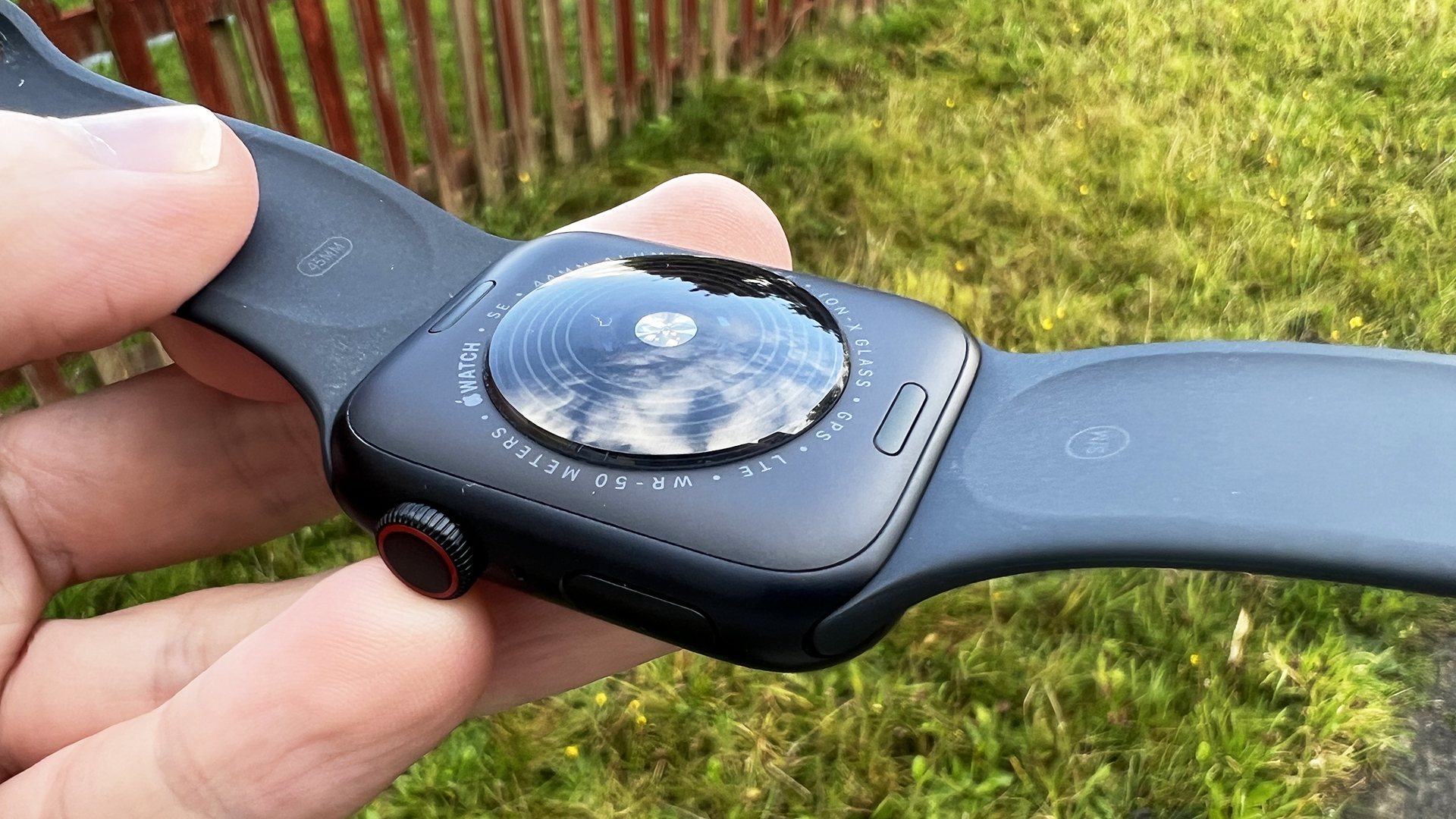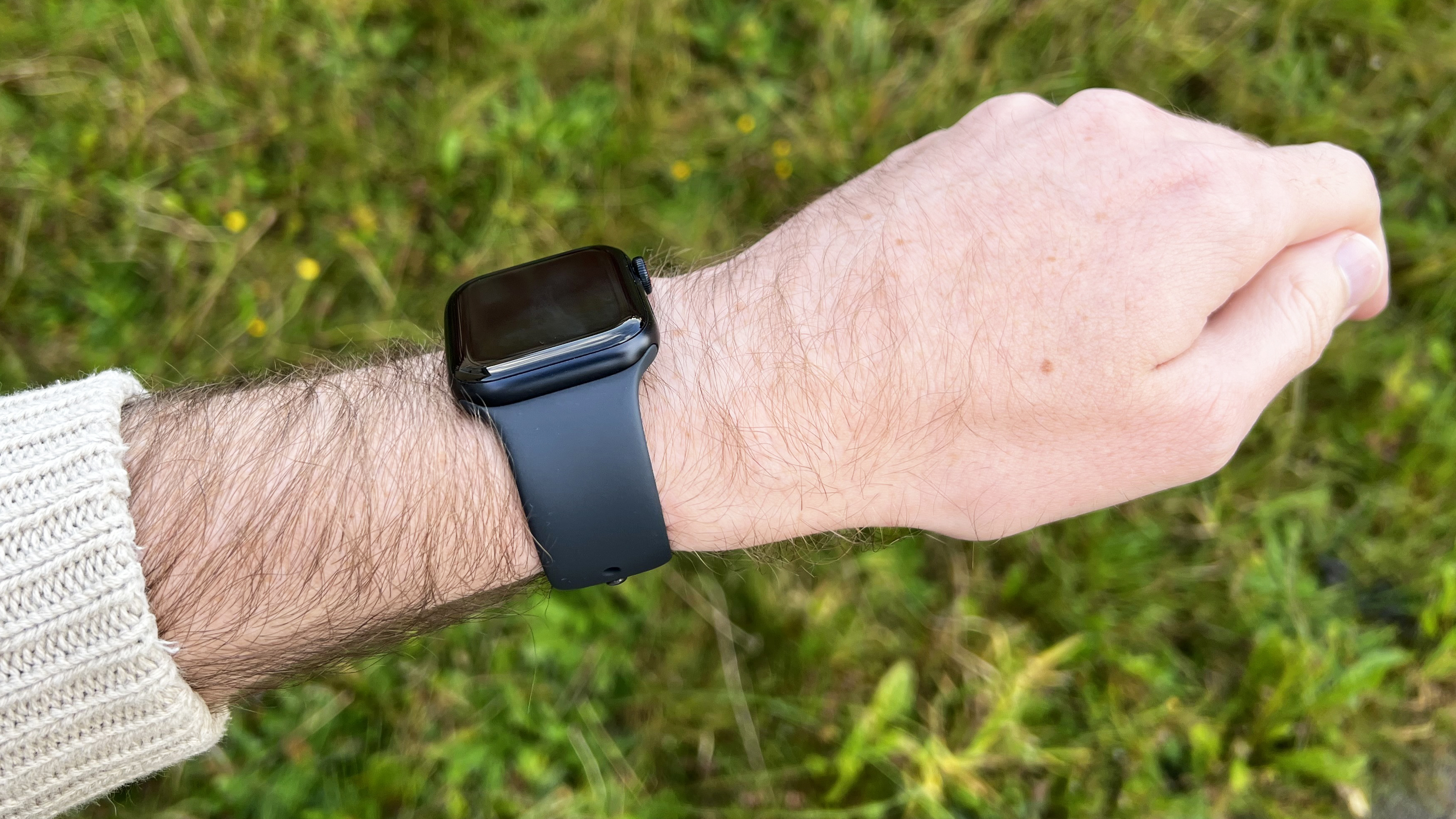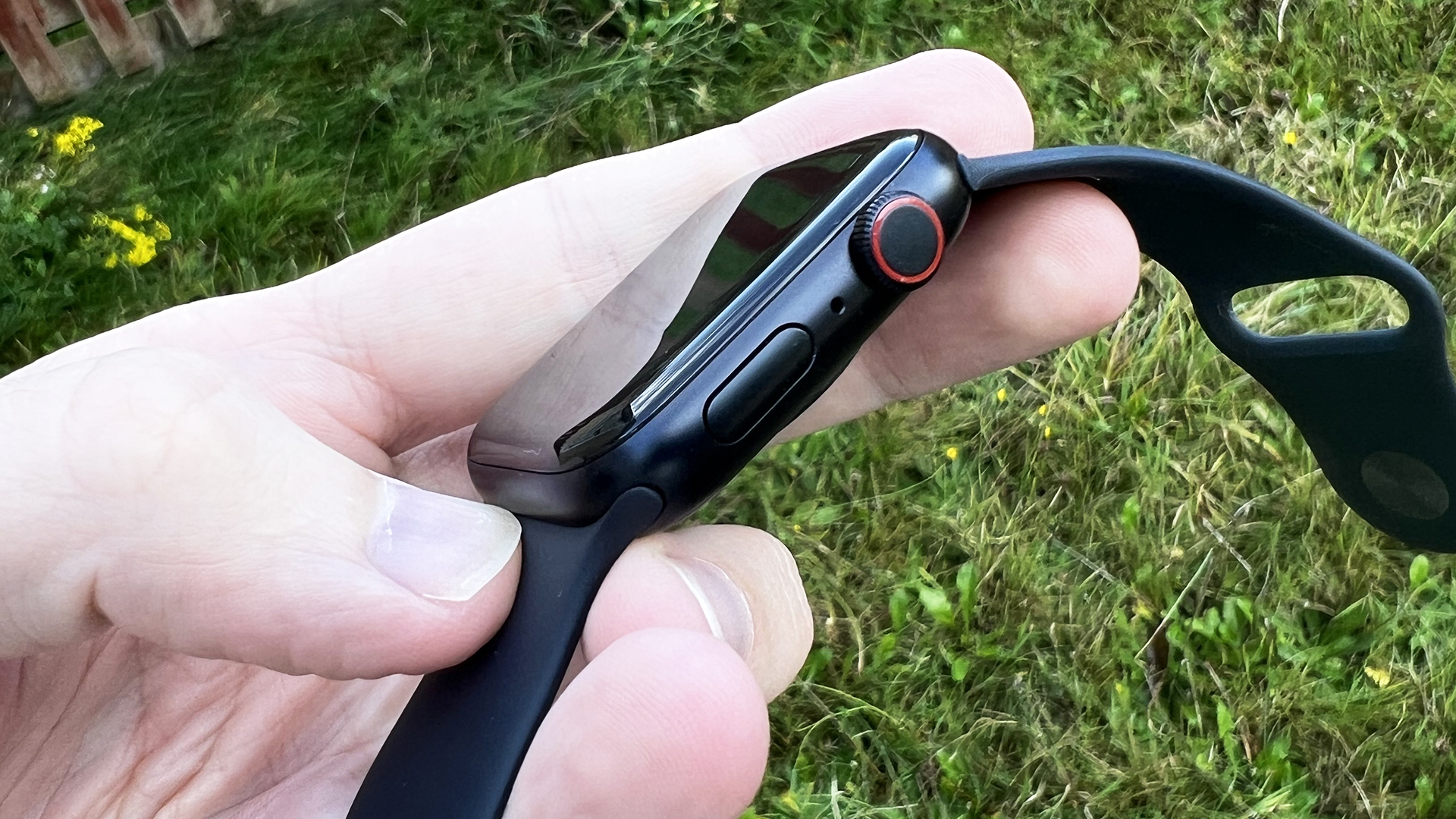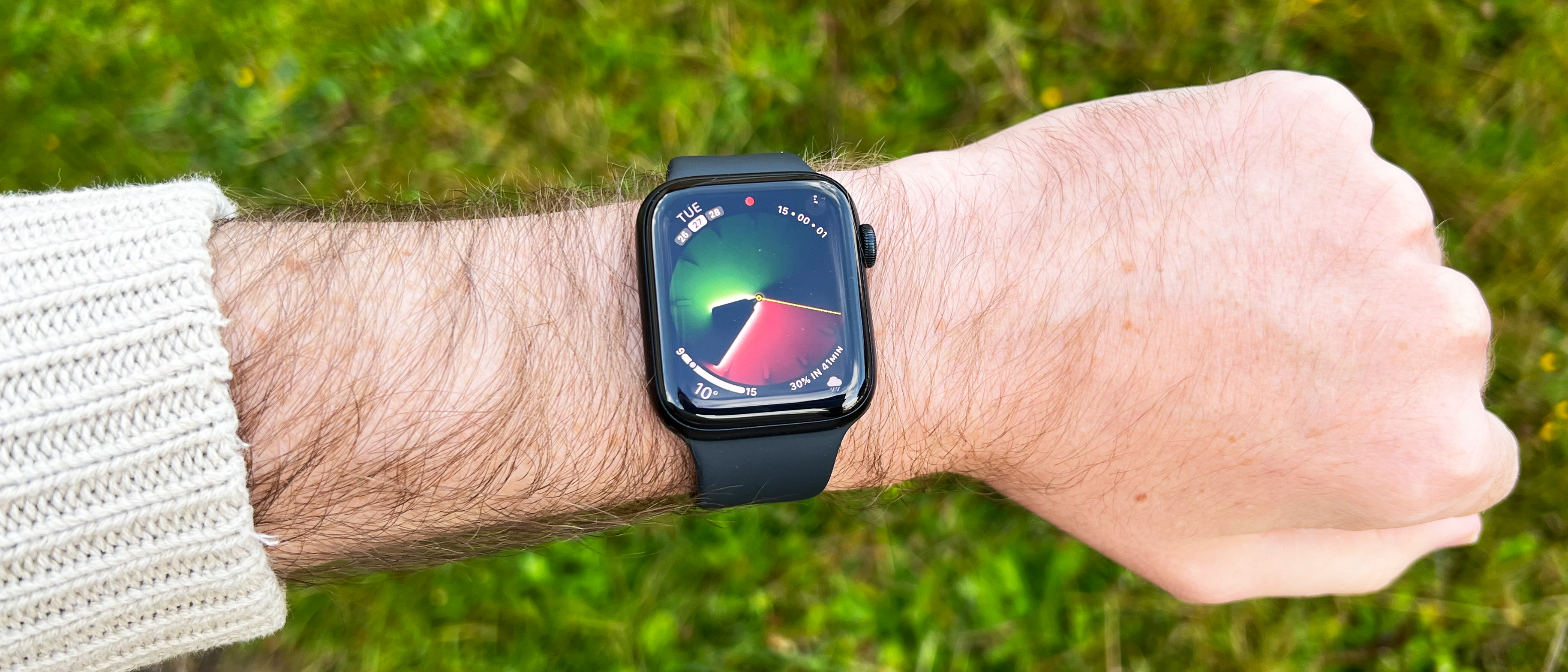Our Verdict
The new Apple Watch SE 2nd Gen is as smooth, fast and flexible as Apple's more expensive smartwatches, with all the app support you could want. The new lighter build makes it perhaps Apple's most comfortable watch ever, too. It's a pity it doesn't have an always-on screen (other watches manage to provide one at a similar price), but we can live with that. And it's great for fitness and general health as long as you don't want to get hardcore with pulse-ox sensing. Even more than before, you need a good reason to upgrade from the Watch SE 2nd Gen to the Series 8, rather than only getting it for budget reasons. It's a great experience for iPhone users in its own regard.
For
- Lightweight, premium design
- Excellent apps and iPhone integration
- Very good fitness options
- Long battery life (for an Apple Watch)
Against
- No always-on screen
- Limited health sensors
- Low battery life (for a fitness watch)
- Only for iPhone users still
Why you can trust Creative Bloq
The Apple Watch SE (2022) is the first update to Apple's lower-priced wearable, and on paper, it doesn't look like much of a change. There are certainly some updates internally, including a new processor and upgraded motion sensors, but there's no big list of new features compared to the older version.
The Apple Watch SE 2nd Generation looks like a refinement of the previous version, and that's exactly what it is. But we're having trouble finding too much fault with that because after testing it in practice for over a week, the list of things we wish Apple has added is short. We switched directly from the Series 7 (the previous flagship) to the new Watch SE, and it didn't feel like a significant step back in the experience. That's the Watch SE's best trick.
Yes, we would prefer that it included an always-on screen, and perhaps one or two more health sensors, given how strongly Apple talks about the importance of this side of what its Watch models do… but Apple also managed to cut the price during a time of inflation, which helps to soften the blow, and put it in contention for the best smartwatches there.
Meanwhile the Watch SE 2nd Gen continues to be a great mid-tier fitness watch for those who want to keep track of progress without getting into the super-deep stats.
The battery life is far better than advertised, and watchOS remains the best-integrated smartwatch system so far, in terms of what it can do in conjunction with your phone, and on its own with the apps available on it. Of course, it still requires an iPhone.
Case material: Aluminium and nylon composite
Sizes: 40mm and 44mm
Processor: Apple S8
Battery life (quoted): 18 hours
Apple Watch SE (2022): Design

The Apple Watch SE 2 looks borderline identical to the original Apple Watch SE, and very similar to the Apple Watch Series 8, but with a couple of notable differences from the Series 8. The SE 2 has a thicker bezel than the 8, so there's a bigger gap between the screen's edge and the device's edge. This means it feels a little less advanced than the Apple Watch Series 8… but only when you have something on-screen that actually fills the display edge to edge. Most of the watch faces and other views are designed to have black edges, which means the screen and the black glass just merge seamlessly, and you can't see where the image ends and the edge begins.
The screen is marginally smaller than the Series 8 screen options – you get 40mm or 44mm here, while the Series 8 offers 41mm and 45mm. It's not a major difference, but it means the smaller SE model is the smallest Apple Watch on offer.
The most important difference, though, is on the rear. While the sides of the Apple Watch SE 2 are aluminium (just like the entry-level Series 8), it has a nylon-composite rear panel around the crystal heart-rate sensor. This is super-light, and it means that this is the lightest Apple Watch available today – it's a good 15% lighter than the Watch Series 8 at the same size. As a result, you barely notice it on your wrist – it's so comfortable and effortless to wear.
The Watch SE 2 comes in three colours: Midnight (black with a blue tint); Starlight (silver with a gold tint); and Silver (no tint). As usual, the bands are totally interchangeable, so you can customise a look just for you.
You've still got the Digital Crown and a side button for control, while on the other side are a microphone and speaker.
The screen is a toughened glass – it's generally good against scratching, but our experience with Apple Watches is that if you're worried, only the sapphire versions (available on Series 8 stainless steel or titanium models) are nearly impossible to scratch.
Apple Watch SE (2022): Features

The screens on the Apple Watch SE 2nd Gen seem to be the same as the previous versions, which means they're impressively bright (up to 1,000 nits) OLED displays. The 40mm version has a resolution of 324x394, while the 44mm offers 368x448. Both look totally sharp and clear from a normal viewing distance. The display is colourful and clear enough even with bright daylight reflecting off it,
It's not an always-on display, though. Most of the time, the screen is off – totally black. When you turn your wrist to face you, it jumps instantly to life, though you can also activate it just by tapping the screen at any point. In comparison, the Apple Watch Series 8 only dims the screen instead of turning it off, so you can always see the time even without moving your arm.
Apple's movement tracking for activating the screen is generally perfect at what it's designed to pick up, but it requires a certain amount of movement – just turning my wrist by 45 degrees while typing this isn't enough to trigger it, for example. This means that the Apple Watch SE lacks subtlety – you can't really check the time surreptitiously. If you want something where you can glance down in meetings without tipping anyone else off, you want the Series 8 (or the Apple Watch Ultra).
This can also be a downside when exercising, if you're doing something where you might want to check how long or how far you've been going, but can't move your wrist, such as during cycling or an elliptical workout. Again, it won't bother you anyway, but if it sounds frustrating to you, you might want to consider the Series 8 instead.
Speaking of fitness, exercise tracking (both passively and actively) is still a big part of what the Apple Watch offers. On the passive side, you've got the 'three rings' that have been there since the start, encouraging you to hit at least minimal levels of exercise and movement during the day. Apple's defaults of 30 minutes of exercise and 12 hours in the day where you stand and move around for at least a minute are set to follow general health guidelines, but you can customise them.
On the more engaged side, you have the Workouts app, where you can tell the Watch you're working out, and it has specific tracking for a wide range of options, from walks to runs to swimming to strength training to yoga. The running tracking has had a big upgrade in watchOS 9, with elements such as stride length, power and contact time now visible – though this isn't unique to the new models.
If you start exercising and you don't tell the Watch, it can actually detect a lot of options automatically and will pop up a notification on your wrist to offer to start recording the workout.
None of this is new to the Watch SE 2nd Gen, and from our experience, but if you're upgrading from an older model (such as the original SE or, particularly, the Watch Series 3), you'll notice it's all slicker and more reliable.
Another key aspect of the Apple Watch SE is health, though this is where the Watch SE is most limited compared to the Apple Watch Series 8. It has a heart-rate sensor on the back that's used during workouts, but it monitors you at other times too and will warn you if your heart rate drops or rises to a concerning degree. It can also try to detect a pattern of irregular heart rhythms, which you can get checked out properly.
This is where it starts to fall away compared to the Series 8. The 8 has an ECG built-in too (as have all flagship Apple Watches since the Series 4), so if the passive sensor thinks you may have an irregular rhythm, you can check it to a high degree of accuracy immediately, avoiding false panics. Given how long this sensor has been on other Apple Watch models, it really feels like it should have made it to the SE this time.
The Series 8 also has a pulse-oxygen sensor, which is useful for hardcore fitness types to monitor how they're recovering, but is also again just a useful passive monitoring tool, and can inform you about conditions such as sleep apnea or lung conditions. The Watch SE lacks this.
And finally, the Series 8 has a temperature sensor, though this is made for quite subtle use so far. It will detect changes over time, which could be useful if you're feeling unwell, but it's mostly designed to help with fertility planning and ovulation tracking. The Watch SE lacks this, though.
However, there are two jewels in the Apple Watch safety crown that the SE 2nd Gen does support: fall detection, and car crash detection. The latter is new to the latest-gen watches and uses a combination of the accelerometer and barometer to detect sudden stops and changes in pressure caused by airbag deployment. Regular fall detection is for personal tumbles.
In both cases, if it detects an accident, the Watch will pop up a notification to ask if you're okay – if you tell it you are, it'll stand down, but if you don't reply it'll assume you're unconscious and will notify emergency services and an emergency contact of your location and what it thinks happened.
These are features you obviously hope you never have to use, but for a lot of people, they can single-handedly justify the price of an Apple Watch, especially for people with mobility issues who may be more vulnerable to falls.
Beyond all of this health and fitness stuff, the Watch is also just a useful 'remote' for your phone, and you get to decide how much you want it to do. It will show notifications from your phone on your wrist, but you can decide which apps get to demand your attention in this way, so you're not overwhelmed. It can make it easy to triage work on difficult or busy days, though you can quickly set a Do Not Disturb mode if you need to focus.
And it has a bigger range of apps than other smartwatches, with genuinely useful tools available. These range from things like weather tracking tools or remote triggers for cameras – though even if you never download a single app, the Apple Watch is a genuinely useful productivity companion anyway.
And the Watch SE 2nd Gen doesn't feel like the cheaper version in any way during all this. It uses the same S8 processor as the Apple Watch Series 8, so smartwatches don't get any smoother or faster. It feels like the full, premium experience despite its lower price.
The only meaningful software difference that isn't related to the missing sensors or always-on display is that, because the screen is a little smaller than the Series 8, you don't get an on-screen qwerty keyboard for typing responses from your wrist. There are other ways to respond (dictation, writing letters, or just using emojis), but if it's the wrist-computer functionality you want, it's worth noting that this is missing.
Like the Series 8, you can get it with 4G mobile connectivity built-in as an optional extra, if you want. You'll need to see if your service provider supports this as an add-on to your iPhone plan, but it means that you can leave the iPhone at home and still receive text, calls and other notifications on your Watch alone. And it's potentially useful even if your provider doesn't support it, or you don't want to pay the extra per month – it works for emergency service calls even with no plan, so if you went running without your iPhone and had a fall, it could help.
Apple Watch SE (2022): Battery life

Apple often undersells the battery life of its products a little… but it massively undershoots the mark here. The official claim is 18 hours of battery life, but we saw a reduction of only around 50% after a full 24 hours of wear, including two workout sessions (one lasting a couple of hours) and sleep tracking overnight.
You can get two days of constant use from this in real life, and if you turn it off overnight, three is not impossible… and that's without even activating the new Low Power Mode.
Turning this on deactivates some background activity to conserve power, so the Watch will no longer be able to give you irregular heartbeat warnings, for example. But you can still use it for everything you would normally – you generally won't notice any difference. But with this mode on, we lost just over 30% over a 24-hour period (again, including sleep tracking).
So the battery life here is very impressive for this kind of smartwatch. It's still much lower than a Fitbit or Garmin, but those don't have the same type of integration with an iPhone.
However, we should note that the Watch SE 2 doesn't include the faster charging that you get from the Apple Watch Series 8 (and was also on the Series 7). So if you're charging from very low, it can take a good hour or so to juice up. But then, you often won't need to juice from low, since it'll still be half full after 24 hours…
Apple Watch SE (2022): Price
At a price of £259 / $249 / AU$399 for the smaller 40mm version of the Watch SE 2 and £299 / $279 / AU$449 for the 44mm version, the price of this watch has fallen slightly compared to its predecessor. Compared to the original Apple Watch SE, the version has come down in price by £10/$30.
Those prices are for the version without 4G – to add that, the price goes up to £299 / $299 / AU$479 for the 40mm model, and £349 / $329 / AU$529 for the 44mm.
This partly explains the lack of new features. With Apple dropping the even-lower-priced Watch Series 3 from its line-up this year, Apple's focus seems to have been on creating a future-proofed Watch SE that could have its price dropped a little even in the middle of a period of inflation.
The price of the Watch SE 2 is fair for what it offers, on balance. The Fitbit Versa 3 is a smartwatch that's cheaper but still fits in an always-on screen, but it's much less slick and powerful overall. The Samsung Galaxy Watch 5 is competitive for features and includes an always-on screen, but costs a little more than the cheaper Watch SE.
Apple Watch SE (2022): Should you buy it?
The Apple Watch SE 2 is a truly premium smartwatch experience for a mid-range price, with the only part that doesn't feel high-end being the lack of an always-on screen. In every other way, it feels like the full experience of owning an Apple Watch.
The Apple Watch Series 8 offers some useful extra sensors for certain health or fitness needs, as well as the always-on screen – and offers steel or titanium finishes, so you may want this model for those reasons.
But if you want genuinely useful (if things go wrong) passive health sensing, with some pretty comprehensive fitness options, and the most flexible and advanced connectivity and app support of any smartwatch, then this is the affordable way to do it.
Read more:

Thank you for reading 5 articles this month* Join now for unlimited access
Enjoy your first month for just £1 / $1 / €1
*Read 5 free articles per month without a subscription

Join now for unlimited access
Try first month for just £1 / $1 / €1
out of 10
The new Apple Watch SE 2nd Gen is as smooth, fast and flexible as Apple's more expensive smartwatches, with all the app support you could want. The new lighter build makes it perhaps Apple's most comfortable watch ever, too. It's a pity it doesn't have an always-on screen (other watches manage to provide one at a similar price), but we can live with that. And it's great for fitness and general health as long as you don't want to get hardcore with pulse-ox sensing. Even more than before, you need a good reason to upgrade from the Watch SE 2nd Gen to the Series 8, rather than only getting it for budget reasons. It's a great experience for iPhone users in its own regard.
Matt is Managing Editor at TechRadar.com, and previously worked on T3, MacLife and MacFormat. He's been testing technology for over a decade, working in specialist Apple publications as well general technology and creative journalism, and has charted Apple’s ups and downs since his student days (but still hopes to hear “one more thing”). By day, you can find him covering TV, audio, smart home gear and more at T3.com, as Home Tech Editor. By night, he's probably updating or pairing or installing some new piece of technology in the quest for the perfect setup.


